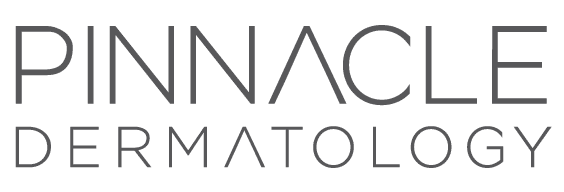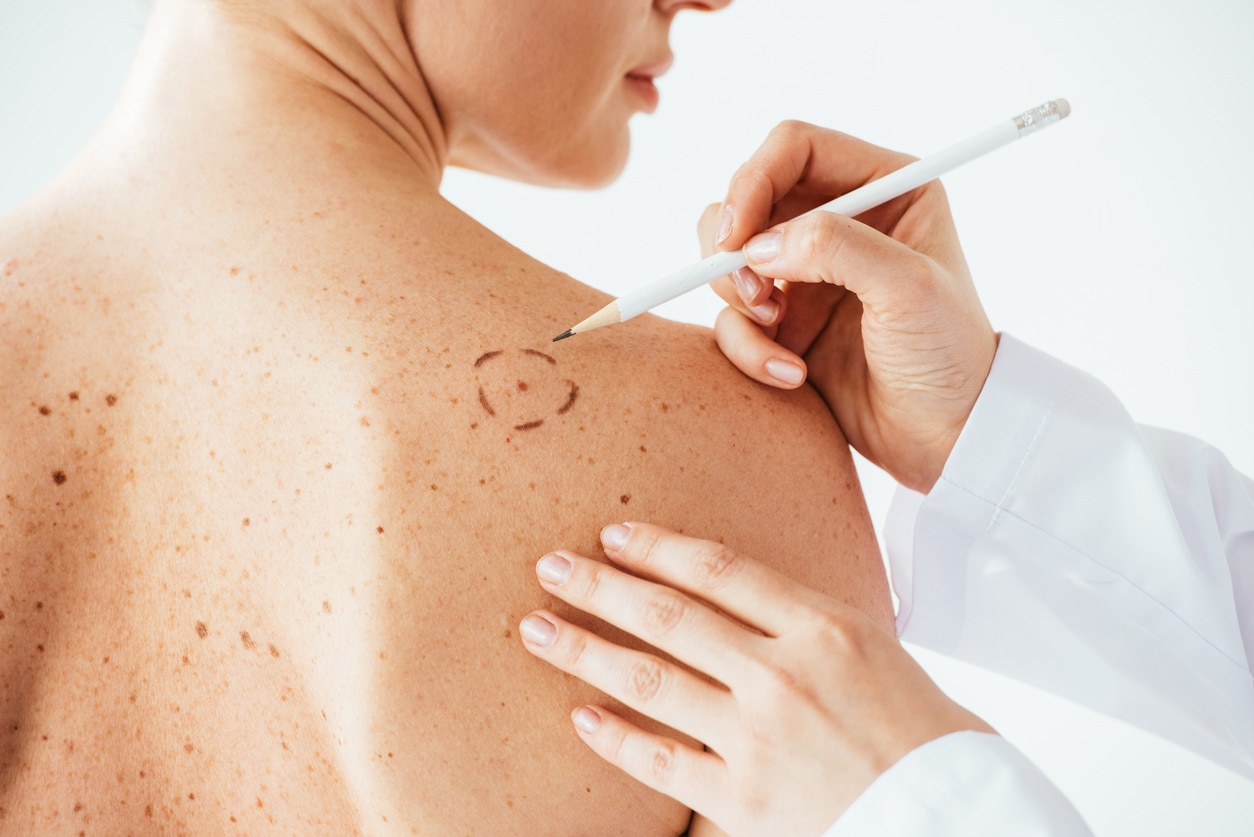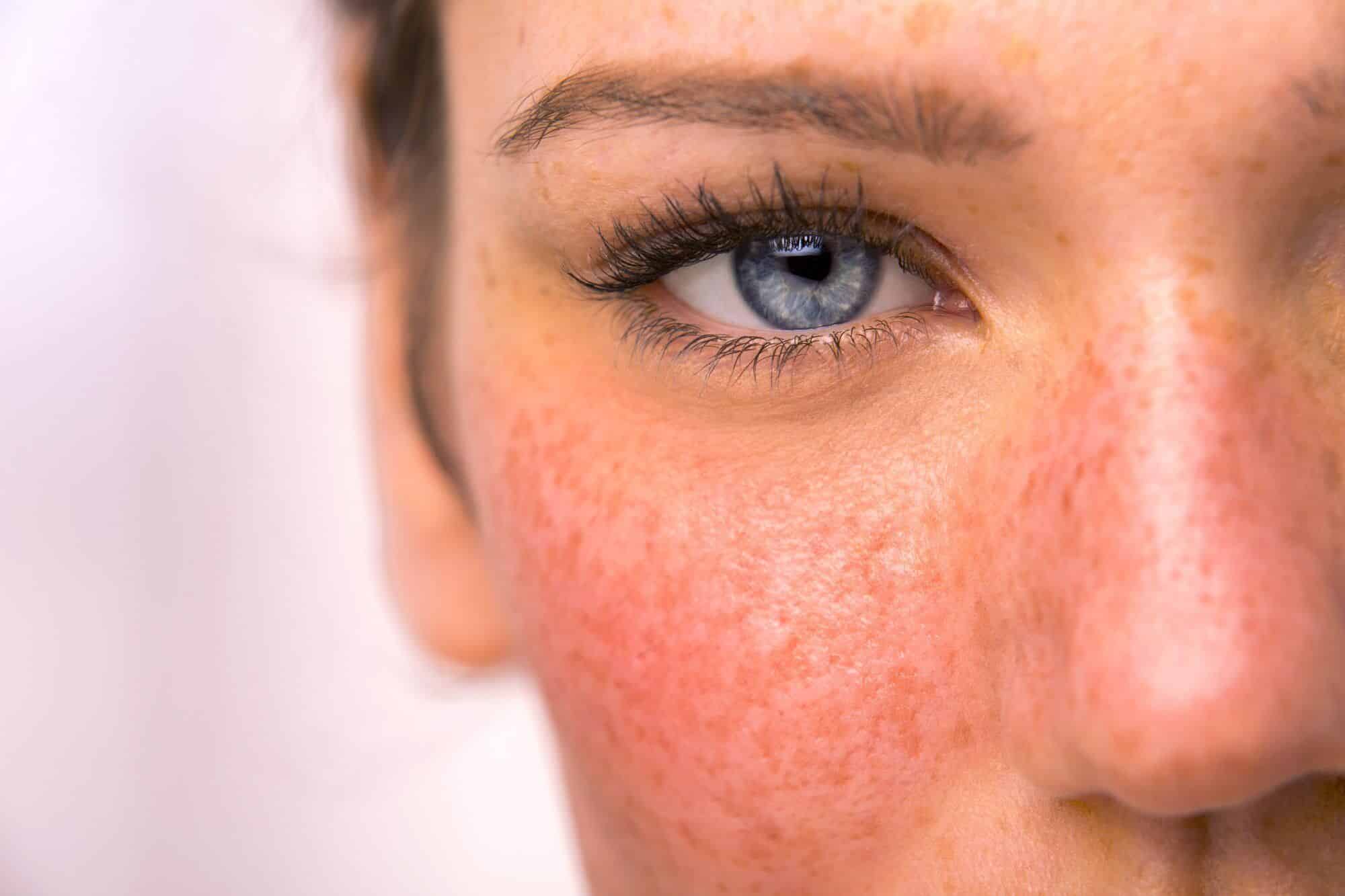May is Skin Cancer Awareness Month, a time dedicated to raising awareness about the most…

Why Do Rosacea Symptoms Get Worse in the Spring?
While springtime brings blossoming flowers and warmer weather, the season is not all roses for those with rosacea flare-ups. Rosacea commonly becomes more aggravated during the spring season, causing a higher occurrence of skin redness, itchy skin, and other symptoms.
The change of seasons can negatively impact those living with rosacea, keeping them from being comfortable and confident in their own skin. At Pinnacle Dermatology, we offer extensive treatment options to help you feel calm and comfortable during the spring and all year long.
What are the Symptoms of Rosacea?
There are many common rosacea symptoms, with the most prominent symptom being flushing episodes. With increased blood flow to the face, rosacea patients often experience red and dry skin, stinging sensations, and discomfort.
Other symptoms of rosacea include:
- Small bumps can also form on your face. These are small pimples that can be mistaken for acne. In many cases, these pumps also contain pus.
- Hot and tender skin is another common symptom. Your face may feel hot when you touch the red areas caused by rosacea.
- Visible blood vessels may also appear as a result of rosacea. These blood vessels typically radiate outwards from your nose.
- An enlarged nose is also reasonably common due to rosacea causing the skin to thicken, thus causing the nose to appear more prominent. However, this occurs more in men than women.
- Eye problems may also affect people with rosacea. This condition is known as ocular rosacea, and it usually occurs before the skin symptoms appear.
Why Does the Springtime Cause Rosacea Flare-Ups?
While the exact cause of rosacea is unknown, patients with rosacea report having common triggers that heighten their skin irritants and symptoms. During the spring season, several of these trigger conditions, such as sun exposure and heat, become more prevalent.
Other causes and triggers that irritate rosacea include:
- Consuming alcohol
- Extreme temperatures
- Sun exposure
- Strong emotions
- During exercise
- Cosmetic products
- Hot drinks
- Spicy food
- Overactive immune system
Common Treatments for Rosacea
Preventing rosacea flare-ups in the spring is imperative to our patient’s physical and mental health. While there are simple at-home ways to avoid irritants, such as avoiding sun exposure, our team at Pinnacle Dermatology offers comprehensive treatment options to address the symptoms and appearance of rosacea.
A standard treatment option includes the use of cortisone creams and gels. These topical drugs can be applied to the skin to reduce the appearance of facial flushing. These creams typically provide improvements and results within the first two to six weeks after treatment begins. We can also use oral antibiotics to treat rosacea.
In more severe cases, laser therapy can minimize the appearance of rosacea by reducing the appearance of visible blood vessels.
Our team offers consultations to provide a thorough analysis of your skin condition and recommended treatment options to determine the best treatment plan. We’re dedicated to helping you find relief for your rosacea symptoms!
Pinnacle Dermatology: Rosacea Treatment in Beaufort, SC
At Pinnacle Dermatology, we use the latest and greatest methods to treat rosacea and other skin irritants. While rosacea can be a complex condition to cope with, there are many treatment options to help reduce its appearance.
Our expert dermatologists are here to help you evaluate and treat redness and bumps on the skin with the most comfortable possible procedure. Get started by calling 843-524-5550 or scheduling your consultation online today!



